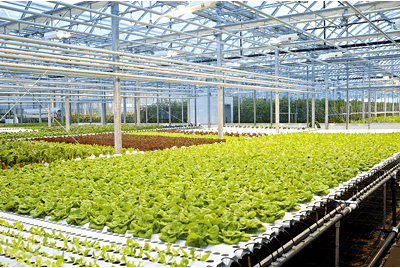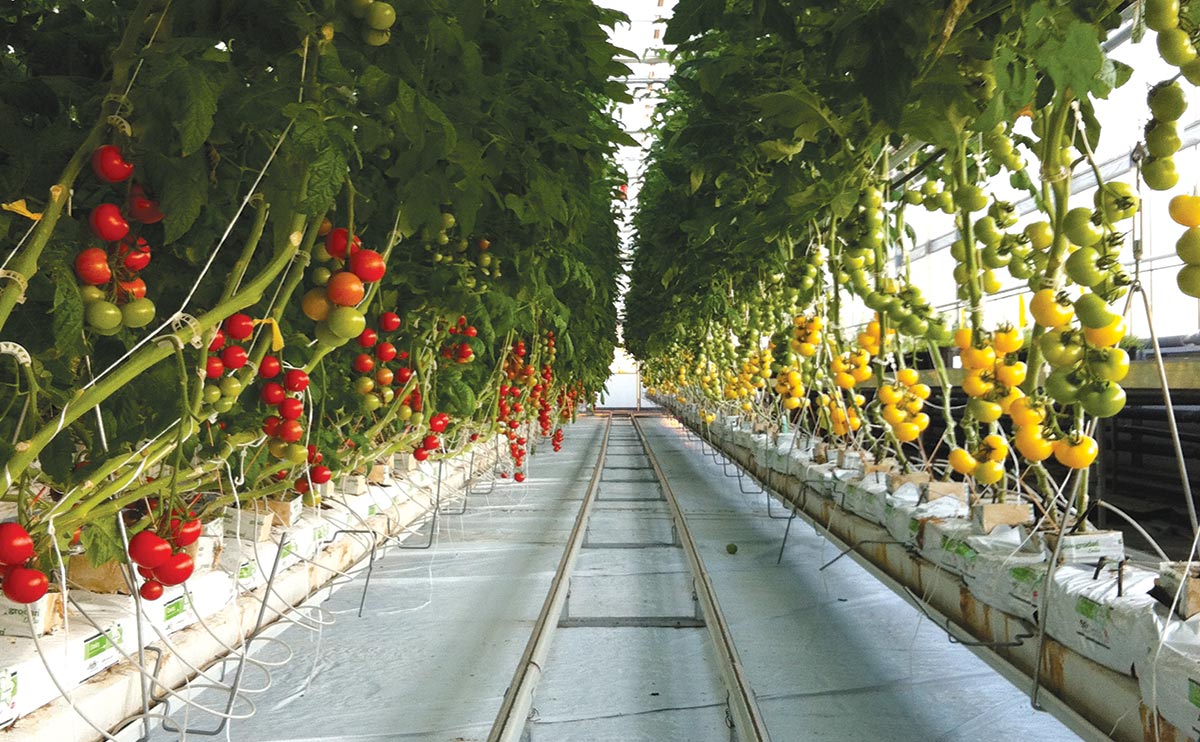A couple weeks ago, Lufa Farms held an open house. They operate a large rooftop greenhouse in Montreal as well as a produce subscription box program.
Naturally I went to scope out their system…
I got to see two basic system types: one for relatively small, relatively short-lived plants like lettuce, swiss chard, and other leafy greens, and another one for peppers, tomatoes, and cucumbers.
The pictures I took got lost, but I found some pictures online that are probably even better for our purposes.
First, the leafy greens:

This system is essentially a very large scale NFT (Nutrient Film Technique) system. The lower right pipe you see is the nutrient solution being fed into channels by irrigation lines in a steady stream. The pipes in this column slope down and to the left so that the solution will flow from one end to the other, be collected in a channel there, and go back to the reservoir to be used again.
Next, the tomatoes:
- Long ‘grow bags’ are strapped onto a drainage rail. The brand is Jiffy and the material inside is large grain coco coir.
- Tomato seeds are germinated in large (4″?) rockwool cubes.
- When the tomatoes start to outgrow the cube, holes are cut in the top of the grow bags and the cubes are set into them. The roots will eventually grow through the cubes, through the bag, and presumably into the channel, depending on what the bottom of the grow bag looks like.
- White ‘spaghetti’ irrigation lines run from a pipe down below directly into the cubes. the nutrient solution will run through the cubes, through the coco coir, into the drainage channel and back to the reservoir to begin the cycle again.

The support system for the tomatoes and cucumbers is also worth looking at. Tomato varieties can be determinate or indeterminate. Think of a determinate tomato plant as having its fate be predetermined. It will be born, it will produce its batch of tomatoes, then it will ripen them all at the same time, and then it’s done. An indeterminate tomato plant, on the other hand, makes tomatoes here and there, ripening them as it feels like it and continuing to produce and ripen more tomatoes, potentially for quite a long time in ideal conditions. An indeterminate plant can generally produce much more fruit in its lifetime, and it does so with more staggered timing which adds stability to Lufa Farms’ inventory.
To get optimal production, the bottom leaves are stripped and the plant is allowed to grow taller and taller, but this is difficult for the gardener because the part of the plant which is producing is very high up. The solution to this is to lower the plants and let the bare lower part of the stem lay at the base of the plant.

The clips securing the support strings to the plant can be seen, as can a large number of clips which have been left on the old tomato stems, presumably to clean later.
Here’s the support system above the plants, by the way:

Wound up wheels of string are hung from a metal frame, with the strings attached to the plant. After the plant reaches the desired height, the grower will begin to drop the plants by releasing a length of string every so often in order to keep the plant from rising any higher.
